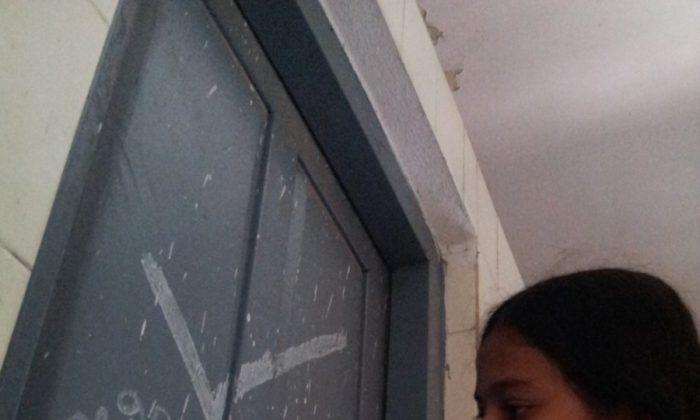BANGALORE, India—A good bathroom experience may improve school attendance. While India’s prolonged sanitation crisis has posed many challenges, it has also become the breeding ground for innovative, cost-effective sanitation for a few Bangalore schools looking for solutions.
The city’s V.V Puram Government Girls High School faced challenges with dropouts, particularly with girls who hit puberty and stopped going or had irregular attendance because of inadequate sanitation facilities.
Bathroom stall doors were broken and there were no waste cans inside the stalls to dispose of feminine hygiene products. Girls had to go outside for this, which made them feel very uncomfortable.
Gautam Prakash, a member of the Bangalore-based nongovernmental organization (NGO) Reap Benefit, which initiated work to provide proper sanitation in city schools, said, “The flush (lavatory) was missing in some bathrooms. Buckets were missing—they usually get stolen. Water was supplied to the school from outside (water tankers) on alternating days. It remained scarcely available in the bathrooms.”
Moreover, maintenance remained a challenge for the toilets in good condition. At this point, the NGO guided the school students in developing cleanliness and eco-friendly habits that slowly became rooted in their daily lifestyles. It also involved the students in planning better sanitation facilities for themselves.
“We focused on learning and understanding what the students wanted and then collectively built a system that they wanted, and it worked,” said Prakash.
The team followed a three-tier approach to encourage students to keep their campus and local area clean and hygienic: develop eco-friendly habits in the students; empower them with practical knowledge about water and energy conservation; and acknowledge their positive efforts and provide them with continual motivation.
The results were encouraging. Wash basins and urinals were created out of large, used water cans and grey water purifying systems were put into place to solve the water shortage problem.
“In another city school, Saarakki Government High School, boys had just a corner to urinate in. We used large water cans to create cost-effective urinals and this simple solution helped create more hygiene,” said Prakash.
Other innovative sanitation solutions included wash basins created out of used plastic cans. The waste water pipes were linked to a grey water purifier and the purified water was supplied to the girls’ toilets.
In order to control odor in some bathrooms, dry toilets or water-less toilets were created. “Due to bacterial growth, odor emanates in urinals, so at this school we are using cheap oil to solve this problem. Oil floats over the urine in the drain eliminating the smell and the need for water,” said Prakash.
These innovative methods, designed by students, have allowed 50 percent more students in the two schools to have access to a pleasant and clean toilet experience.
According to Prakash, since hygiene and sanitation habits are developed in childhood, the children that get a better toilet experience will surely carry these habits forward into adulthood. “They will bring the same sense of sanitation to their future families as well.”
School authorities have also recognized that acknowledging children as the torch bearers of sanitation in their household and community can solve many lingering sanitation problems in India.
R. Hallama, headmistress of Saarakki Government High School said, “There is a remarkable change now as the students have developed a conscience for hygiene. They are involved in the system so they like to be a part of it. If they see some dirt in the washbasin or something faulty, they take the initiative and clean it and maintain sanitation themselves.”
In order to meet targets set by United Nations Millennium Development goals, by 2015, India needs to reduce the proportion of households that lack access to improved sanitation to 38 percent.
According to “India’s Sanitation for All,” a report published by the Asian Development Bank that examined the current state of sanitation services in India: 55 percent of Indians (600 million people) who live in rural areas and urban slums, still do not have access to any kind of toilet; while 74 percent of the rural population still defecates in public.
Most of the households in the urban slums have no private bathrooms, and most community toilets do not actually function due to damaged septic tanks or broken drainage pipes. This is not only visually disturbing, but has hazardous implications for public health.
“One way that can help us achieve the Millenium Development goals is the bottom-up approach. This involves spreading knowledge and awareness among the people,” said Prakash.
According to Prakash, working with students can strengthen their ability to influence their families and, in turn, influence the larger society. When children experience the benefits of the initiatives, they become convinced about what is good for them.









Friends Read Free